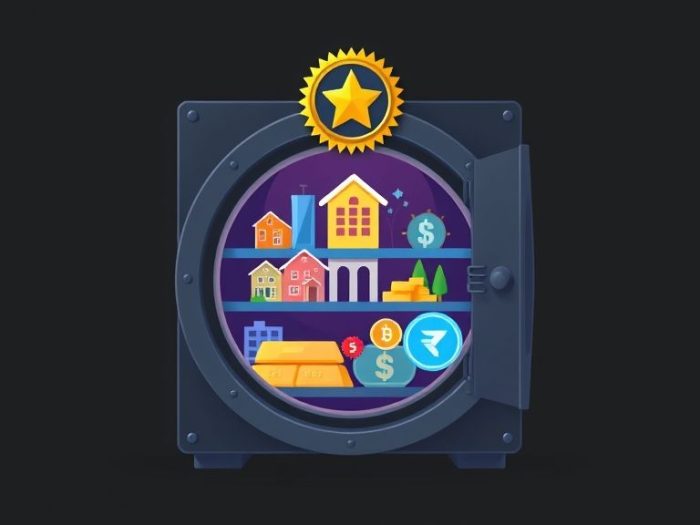Self-Directed IRAs (SDIRAs) offer a unique opportunity to diversify your retirement portfolio
beyond traditional stocks and bonds. They allow you to invest in alternative assets, but it’s
crucial to understand the rules and regulations. This article provides a comprehensive guide on
how to use a Self-Directed IRA for alternative investments.
Understanding Self-Directed IRAs
A Self-Directed IRA is a type of Individual Retirement Account (IRA) that allows you to hold a
wider range of investments than a typical IRA. While traditional IRAs are usually limited to
stocks, bonds, and mutual funds, SDIRAs can hold:
- Real estate
- Private equity
- Private debt
- Tax liens
- Precious metals
- And more
Why Use a Self-Directed IRA?
- Diversification: Access to alternative assets that may not be correlated with the stock market.
- Control: Greater control over your investment choices.
- Potential Returns: Some alternative assets offer the potential for higher returns.
How to Use a Self-Directed IRA for Alternative Investments
1. Choose a Self-Directed IRA Custodian
You’ll need a custodian that specializes in handling SDIRAs. These custodians are responsible
for holding and administering your IRA assets.
2. Fund Your SDIRA
You can fund your SDIRA through contributions or rollovers/transfers from other retirement
accounts.
3. Find an Investment Opportunity
Research and identify alternative investments that align with your investment goals and risk
tolerance.
4. Conduct Due Diligence
Thoroughly investigate the investment opportunity. This is crucial as SDIRAs offer more
investment freedom but also greater responsibility.
5. Execute the Investment
Work with your SDIRA custodian to complete the necessary paperwork and execute the investment.
Types of Alternative Investments in SDIRAs
1. Real Estate
Investing in physical properties, such as:
- Rental properties
- Land
- Commercial real estate
2. Private Equity
Investing in private companies not traded on public stock exchanges.
3. Private Debt
Lending money to private businesses or individuals.
4. Tax Liens
Purchasing the right to collect delinquent property taxes.
5. Precious Metals
Investing in physical gold, silver, platinum, etc.
Important IRS Rules and Prohibited Transactions
The IRS has strict rules regarding SDIRAs. Prohibited transactions, which can result in
penalties and disqualification of your IRA, include:
- Investing in collectibles (art, antiques, etc.)
- Transactions with disqualified persons (you, your family, etc.)
- Using IRA funds for personal benefit
Risks of Self-Directed IRAs
- Complexity: SDIRAs involve complex rules and regulations.
- Illiquidity: Alternative assets can be difficult to sell quickly.
- Valuation Uncertainty: Valuing some alternative assets can be subjective.
- Fraud: There is a risk of fraud or scams.
- Due Diligence Responsibility: You are responsible for conducting thorough due diligence.
Conclusion
Self-Directed IRAs can provide access to alternative investments and diversification benefits.
However, they require careful planning, adherence to IRS rules, and a thorough understanding of
the risks involved.
Related Keywords
Self-directed IRA, SDIRA, alternative investments, IRA real estate, IRA private equity, IRA
rules, IRA prohibited transactions, IRA custodian, retirement investing, non-traditional IRA.
Frequently Asked Questions (FAQ)
1. What is a Self-Directed IRA (SDIRA)?
A Self-Directed IRA is a type of Individual Retirement Account that allows you to
hold a wider range of investments than a typical IRA, including alternative assets.
2. What are some examples of alternative assets that can be held in an SDIRA?
Examples include real estate, private equity, private debt, tax liens, and precious metals.
3. How does a Self-Directed IRA differ from a traditional IRA?
A traditional IRA typically limits investments to stocks, bonds, and mutual funds, while
an SDIRA allows for a broader range of assets.
4. What is an SDIRA custodian?
An SDIRA custodian is a financial institution that specializes in holding and
administering Self-Directed IRAs.
5. What are prohibited transactions in an SDIRA?
Prohibited transactions are transactions with disqualified persons (you, your family,
etc.) or using IRA funds for personal benefit, which can disqualify your IRA.
6. What are the potential benefits of using an SDIRA?
Benefits include diversification, greater control over investments, and the potential
for higher returns from alternative assets.
7. What are the risks of using an SDIRA?
Risks include complexity, illiquidity of alternative assets, valuation uncertainty, and
the risk of fraud.
8. Is real estate a common investment in SDIRAs?
Yes, real estate is a common investment in SDIRAs, but it must be held strictly for
investment purposes and not for personal use.
9. Can I use my SDIRA to flip houses?
Yes, you can use your SDIRA to invest in real estate for flipping, but all profits
must go back into the IRA.
10. Should I consult a financial advisor about using an SDIRA?
Yes, consulting a financial advisor or tax professional is highly recommended to
understand the rules and regulations and ensure you’re using an SDIRA appropriately.



